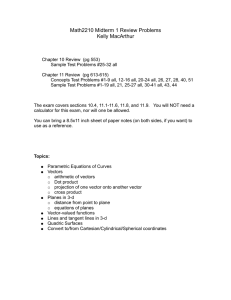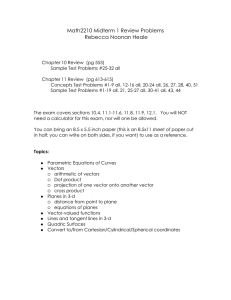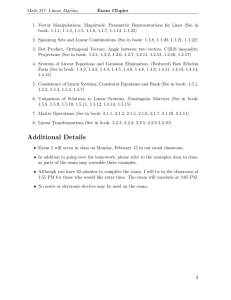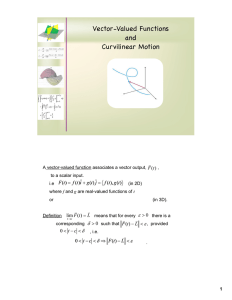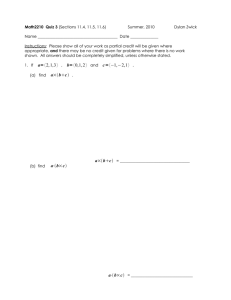Derivatives of Vectors Lesson 10.4
advertisement
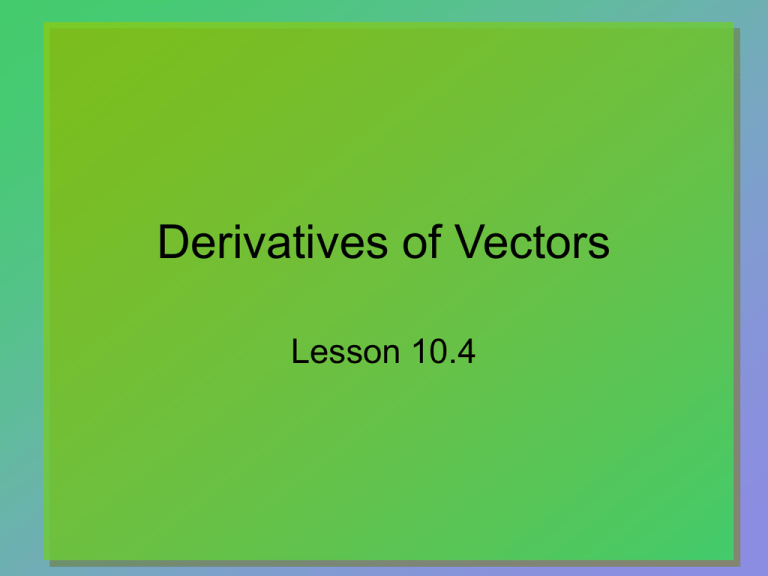
Derivatives of Vectors Lesson 10.4 Component Vectors • Unit vectors often used to express vectors P = Pxi + Py j i and j are vectors with length 1, parallel to x and y axes, respectively P = Pxi + Py j j i 2 Vector Functions and Parametric Equations • Consider a curve described by parametric equations x = f(t) y = g(t) • The curve can be expressed as the vector-valued function, P(t) P(t) = f(t)i + g(t)j t =t 1= 2 t=3 t = 4t = 5 3 Example • Consider the curve represented by parametric equations x ln t 2 y cos 1 t 2 • Then the vector-valued function is … P(t ) ln t i cos 1 t j 2 2 4 Derivatives of Vector-Valued Functions • Given the vector valued function p(t) = f(t)i + g(t)j Given also that f(t) and g(t) are differentiable • Then the derivative of p is p'(t) = f '(t)i + g'(t)j • Recall that if p is a position function p'(t) is the velocity function p''(t) is the acceleration function 5 Example • Given parametric equations which describe a vector-valued position function x = t3 – t y = 4t – 3t2 • What is the velocity vector? v(t ) 3t 2 1 i 4 6t j • What is the acceleration vector? a(t ) 6t i 6 j 6 Example • For the same vector-valued function x = t3 – t and y = 4t – 3t2 • What is the magnitude of v(t) when t = 1? v (t ) 3t 2 1 i 4 6t j v (1) 2i 2 j v 22 22 8 2 2 • The direction? 2 7 tan 4 2 4 1 7 Application • The Easter Bunny is traveling by balloon Position given by height y = 360t – 9t2 and x = 0.8t2 + 0.9 sin2t (positive direction west) • Determine the velocity of the balloon at any time t • For time t = 2.5, determine Position Speed Direction 8 Assignment • Lesson 10.4 • Page 426 • Exercises 1 – 13 odd 9
